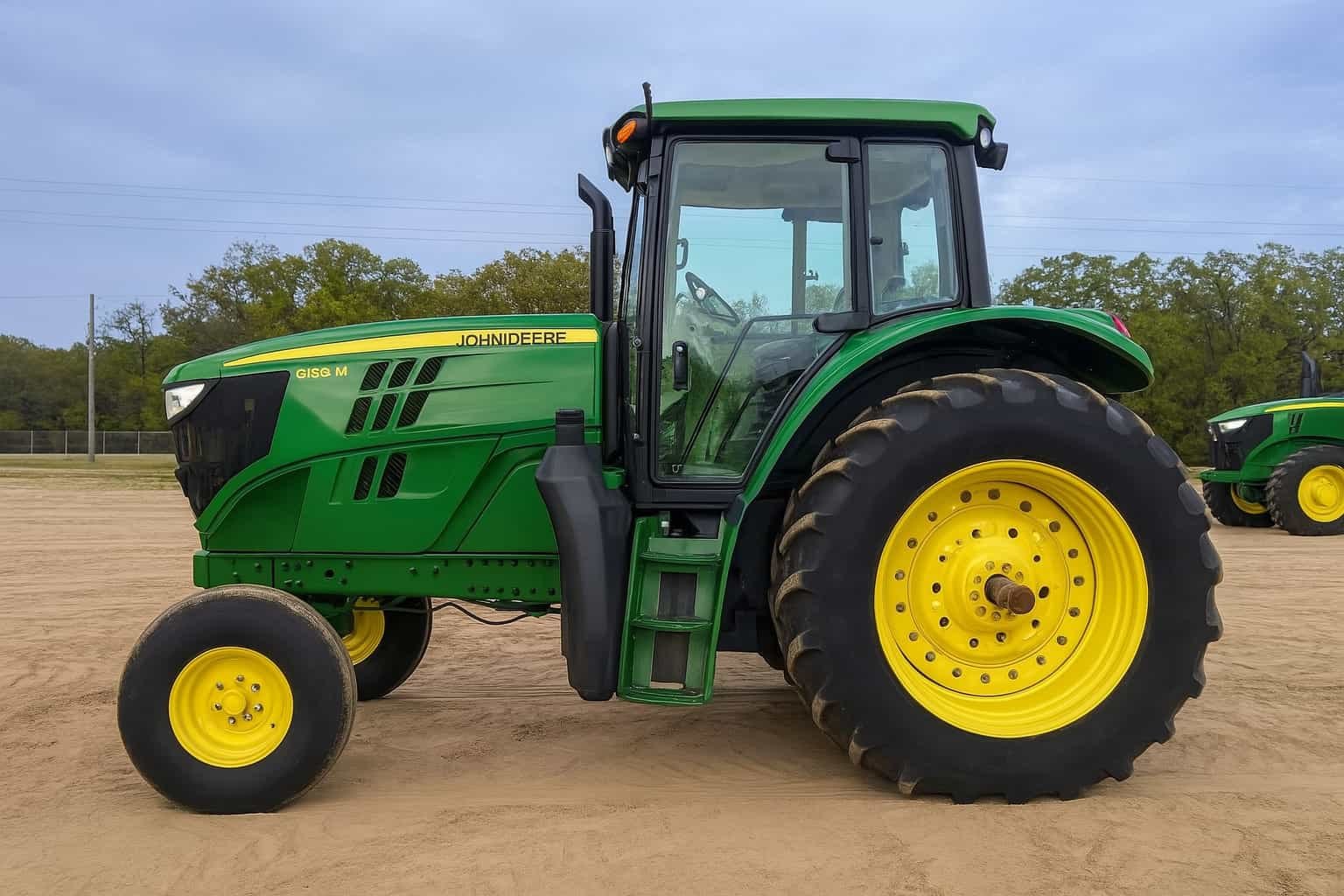What is a 2WD Tractor?
A 2WD (Two-Wheel Drive) tractor is an agricultural vehicle that uses only two wheels for driving power, typically the rear wheels. This type of tractor is best suited for flat terrains and lighter agricultural tasks.

Key Characteristics of 2WD Tractors:
- Drive Mechanism: Only the rear wheels are powered.
- Terrain Suitability: Ideal for flat and dry land.
- Cost-Effectiveness: Generally cheaper than 4WD tractors.
- Maintenance: Easier and less costly to maintain.
Applications:
- Tillage: Suitable for light tillage operations.
- Transport: Effective for transporting goods over short distances.
- Mowing: Adequate for mowing and light field work.
Technical Considerations:
- Traction: Limited traction in muddy or hilly conditions.
- Turning Radius: Typically has a smaller turning radius, making it easier to maneuver in tight spaces.
2WD tractors are a practical choice for many farmers due to their simplicity, lower cost, and ease of maintenance. However, they are less effective in challenging terrains compared to their 4WD counterparts.
What Does 2WD Stand For?
2WD stands for “Two-Wheel Drive.” It is a drivetrain system in vehicles where only two wheels receive power from the engine. In most cases, these wheels are either the front two or the rear two, depending on the vehicle’s design.

Key Points About 2WD:
- Front-Wheel Drive (FWD): Power is sent to the front wheels, offering better traction while steering.
- Rear-Wheel Drive (RWD): Power is directed to the rear wheels, providing improved handling and acceleration.
Advantages of 2WD:
- Cost-Effective: Generally cheaper to manufacture and maintain compared to 4WD or AWD.
- Fuel Efficiency: Often more fuel-efficient due to the lighter drivetrain.
Common Uses:
- City Driving: Ideal for paved roads and urban environments.
- Light Off-Road: Suitable for mild off-road conditions but not recommended for extreme terrains.
Understanding 2WD helps in choosing the right vehicle based on driving needs and conditions.
What are the advantages of a 2WD tractor?
A 2WD (Two-Wheel Drive) tractor offers several advantages including cost-effectiveness, simplicity in design, and ease of maintenance. These tractors are ideal for light to moderate farming tasks and excel in flat terrains.

Key Advantages of a 2WD Tractor
- Cost-Effective: 2WD tractors are generally less expensive than their 4WD counterparts, making them a budget-friendly option for small-scale farmers.
- Simplicity: With fewer mechanical components, 2WD tractors are easier to operate and maintain.
- Fuel Efficiency: These tractors consume less fuel due to their lighter weight and simpler design.
- Maneuverability: 2WD tractors are more maneuverable in tight spaces and are easier to handle in stable, flat terrains.
- Lower Maintenance Costs: Fewer moving parts mean reduced wear and tear, leading to lower maintenance costs over time.
Ideal Use Cases
- Light Tillage: Perfect for tasks that do not require heavy traction.
- Transport: Efficient for on-road and off-road transport tasks within farms.
- Haying: Suitable for activities like mowing, raking, and baling hay.
In summary, a 2WD tractor is a practical choice for farmers who need an affordable, efficient, and easy-to-maintain machine for light agricultural tasks on level ground.
What are the disadvantages of 2WD?
Two-wheel drive (2WD) vehicles have limitations such as reduced traction on slippery surfaces, lower off-road capability, and potential challenges in adverse weather conditions. These downsides can impact driving safety and performance.

Key Disadvantages of 2WD:
- Reduced Traction: In environments like snow, mud, or ice, 2WD vehicles lack the traction provided by all-wheel drive (AWD) or four-wheel drive (4WD).
- Limited Off-Road Capability: 2WD vehicles are less capable on rough terrains, making them unsuitable for off-road adventures.
- Potential Safety Issues: In adverse weather conditions, 2WD vehicles may struggle with stability and control, increasing the risk of accidents.
- Resale Value: 2WD vehicles generally have lower resale value compared to their AWD or 4WD counterparts.
Conclusion
While 2WD vehicles are often more fuel-efficient and cost-effective, their disadvantages in traction, off-road capability, and safety in adverse conditions should be considered based on your driving needs.
What is the difference between 4×2 and 4×4?
A 4×2 vehicle has two-wheel drive, meaning only two wheels receive power from the engine, typically the rear wheels. A 4×4 vehicle, on the other hand, has four-wheel drive, meaning all four wheels receive power, enhancing off-road capability and traction.
Key Differences:
- Drive Power Distribution:
- 4×2: Power is distributed to only two wheels.
- 4×4: Power is distributed to all four wheels.
- Traction:
- 4×2: Less traction, suitable for regular driving conditions.
- 4×4: Enhanced traction, ideal for off-road and adverse conditions.
- Fuel Efficiency:
- 4×2: Generally more fuel-efficient due to less power demand.
- 4×4: Typically less fuel-efficient because of increased power usage.
- Complexity and Cost:
- 4×2: Simpler and often cheaper to maintain.
- 4×4: More complex and usually more expensive to maintain.
By understanding these differences, consumers can choose the appropriate vehicle based on their specific needs and driving conditions.

